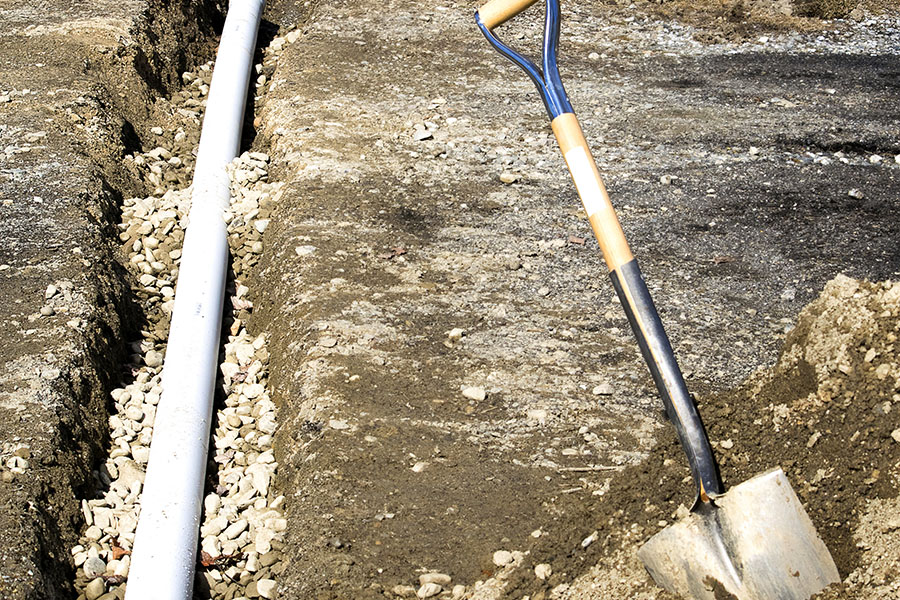In equestrian arenas of all sizes, the drainage plays a crucial role in determining the arena quality. No matter how great your footing composition or area layout, poor drainage can ruin your arena.
A proper and effective drainage system is what will allow you to maintain the integrity of the arena base and ensure quality footing composition. The effectiveness of your drainage system also influences how much maintenance, including watering and dragging, you will have to do as well.
As you consider drainage systems for your new or existing outdoor horse arena, you are probably thinking why you should build a French drain. But how does a French drain and is it actually worth the investment?
What is a French Drainage System?
A French drain is a pretty simple system composed of perforated drainage pipes buried within a trench. The water flows through the footing and subgrade and into the drainage pipe, where it then moves down the grade. Properly-designed French drains move the water outside of the arena.
The pipe must be wrapped in geotextile fabric or a similar material so that no silt or rocks enter and clog the drain.
Depending on the size of the arena, you will likely need to utilize more than one drainage pipe. A common rule of thumb is to install one pipe every 10 meters across the entire width of the arena.
How to Install a French Drain
You can install a French drain system in an existing arena, but the process can be costly and is more complex than installing one for a new arena.
Installing a French drain is one of the best ways to improve – or prevent – poor drainage. These are the steps to install a French drain:
- Determine the gradient and flow patterns
- Mark trenches
- Figure out the proper depth
- Line trench and add bottom layer of gravel
- Wrap and lay pipe
- Cover with drainage gravel or other subgrade
- Place footing materials
Should I Build a French Drain?
For outdoor arena construction, a French drain is one of the most common and effective drainage tools. It requires a significant investment, but it will reduce maintenance costs.
Whether you are designing and installing a new arena or attempting to improve drainage in an existing one, you should thoroughly evaluate the existing landscape and gradient and try to work with that flow where possible. In certain scenarios, including if the slope flows to the interior of the arena, then you may need to adjust the gradient. This is true whether you decide to build a French drain or some other type of drainage system.
It is also important to remember that the system below the surface is just one of the factors that impact the overall drainage patterns and arena quality. The footing materials and the sub-base composition also impact your arena’s ability to properly channel water.
French Drains and Quality Footing
As you design your new outdoor equestrian arena, drainage is one of the most important considerations.
But it’s not the only one.
The quality of the arena footing is another crucial element that will impact your arena’s drainage and overall quality. It also determines how much watering you will need to do.
Here at Performance Footing, we help equestrian arena operators across the Country offer the highest quality arenas for their customers. Contact our Footing Specialists today by calling (877)-835-0878 so we can consult your arena(s).
